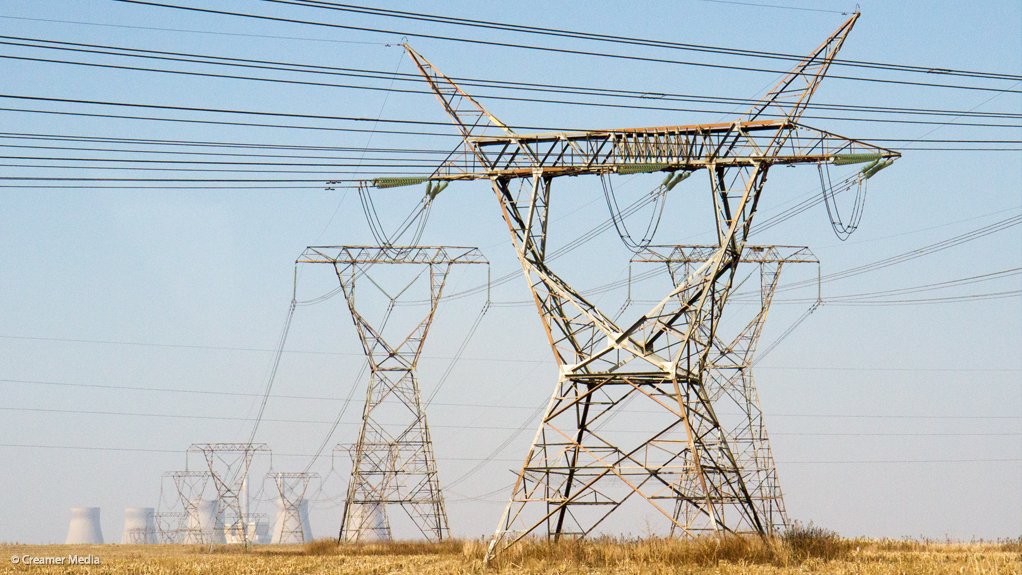A recent resurgence of unplanned breakdowns across Eskom’s coal fleet has resulted in a serious depletion of emergency water and diesel reserves to the point where the utility has moved to implement more than six consecutive days of Stage 2 load-shedding.
The declaration represents the first bout of rotational power cuts for 2022 and follows on from what was the utility’s worst-ever year for load-shedding in 2021, when a total of 1 773 GWh was not supplied to customers across 1 150 hours.
CEO Andre de Ruyter reported that pumping hours across Eskom’s pumped-storage plants had increased materially, owing primarily to a lack of available electricity over the weekend.
Diesel stocks, meanwhile, had fallen to a critically low level of only 32% at its Ankerlig open-cycle gas turbine (OCGT) plant.
Stocks at the Gourikwa OCGT power station had fallen less precipitously to 76% by Tuesday morning.
Speaking during a briefing called only hours ahead of the implementation of load-shedding, De Ruyter reported that unplanned losses had risen to 13 462 MW, from less than 10 000 MW on January 27, while planned outages stood at 4 435 MW.
Included in those planned outages is the extended five-month outage of Koeberg Unit 2 for both refuelling and the replacement of its three steam generators.
Once Unit 2 is returned to service, Unit 1 will undergo the same process, resulting in the facility operating at half its 1 840 MW generating capacity for most of the year, increasing the risks of load-shedding and higher-than-budgeted diesel use.
Eskom is on record as stating that load-shedding could be avoided until the end of March only if unplanned breakdowns remained below 12 000 MW. Should breakdowns rise to 13 000 MW or 14 000 MW, however, the number of load-shedding days would rise to two and 29 respectively.
COO Jan Oberholzer acknowledged that implementing load-shedding to assist with the refilling of dams at its pump storage plants, as well as to facilitate a replenishment of diesel stocks, was indicative of a system that was afflicted by an energy rather than a capacity shortage.
He, thus, reiterated the urgent need for an injection of more energy by adding between 4 000 MW and 6 000 MW to the system.
Independent energy analyst Clyde Mallinson told Engineering News that nothing exemplified the country’s shortage of energy more than the fact that Eskom is load-shedding to fill the pumped storage dams.
It also pointed, he said, to the mistake that was made in 2019 when Eskom claimed that it had a shortage of capacity not energy.
As a result, the Risk Mitigation Independent Power Producer Procurement Programme (RMIPPPP) was designed to provide additional capacity rather than energy, which could have been provided quickly and cheaply from solar photovoltaic and onshore wind generators.
Should the projects eventually close, the RMIPPPP capacity will arise in the form of gas-to-power from power ships and electricity produce by hybrid facilities that combine solar, wind, batteries and gas, supplying constant, but extremely expensive, electricity from 5:00 in the morning to 21:00 at night.
If South Africa had, instead, built 6 GW of solar photovoltaics in the two years since the much-delayed RMIPPPPP was launched “we would now not be having to shed load in order to top up our water”, Mallinson explained to Engineering News.
“We would then be able to top up our water every day when the sun is shining and, of course, the water, when it is being released instead of being topped up, represents capacity – the 3 GW of pumped storage in the system is capacity, while the 20 hours that it can produce electricity for is energy.”
Using the analogy of a human body, Mallinson explained that the “heart had the same capacity to pump but did not have enough blood”, and RMIPPPP’s remedy was to build a bigger heart rather than to infuse more blood into the system.
Meanwhile. Eskom also used the briefing to again warn that the maintenance programme to restore stability across its coal fleet remained in backlog and would take time, money and skill to address.
Group executive for generation Phillip Dukashe also acknowledged that the lower energy availability factor from the fleet and the higher energy utilisation factor (EUF) across the remaining operational units would have negative consequences for the reliability maintenance push.
He said the higher EUF, which stands at about 90% currently, is being factored into its life-of-plant and outage plans and that it would increase the amount of maintenance that will be required, as well as the cost of that maintenance.
EMAIL THIS ARTICLE SAVE THIS ARTICLE ARTICLE ENQUIRY
To subscribe email subscriptions@creamermedia.co.za or click here
To advertise email advertising@creamermedia.co.za or click here











